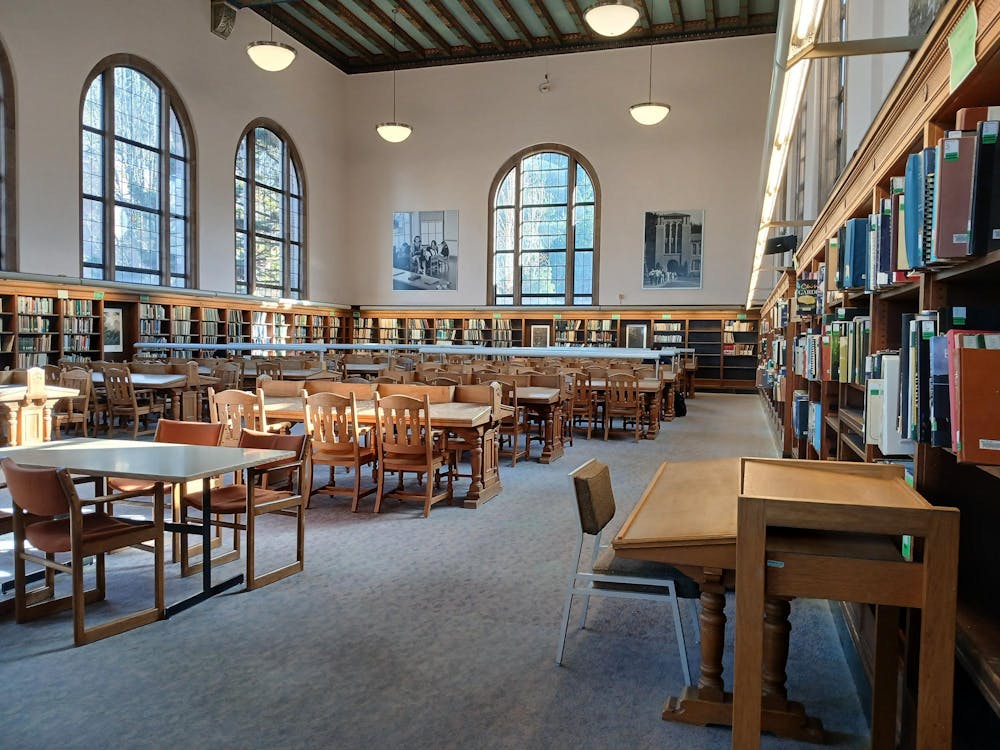On Wednesday, Feb. 19, the nine Washington State Supreme Court justices will visit Western Washington University to hold a Q&A session from 9-11 a.m. in the Wilson Library Reading Room. On Thursday, Feb. 20, the court will hear two cases from 9-11 a.m. in the Wilson Library Reading Room. Both events will be open to the public.
The Q&A and the hearings will be available to attend in person and on Zoom. Registration is open now.
The Washington Supreme Court’s Traveling Court Outreach program started exactly 40 years ago with a visit to the University of Washington School of Law on Feb. 20, 1985. The first visit to Western by the court was in 1986.
In April 2024, the Washington State Court of Appeals heard oral arguments for three cases and held a Q&A at Western.
Ceci Lopez is an associate professor and the director of the Center for Law, Diversity and Justice (LDJ) at the Fairhaven College of Interdisciplinary Studies. Lopez said she received reports from students who appreciated seeing cases unfold in real-time during the April Washington State Court of Appeals visit.
“It was incredibly informative to everybody who attended because it’s bringing to life some of the theory and things we talk about in the classroom,” Lopez said. “Reading a case is not the same as seeing it in person.”
Alejandra Cabrales, an alumna of the LDJ program and an attorney with Whatcom Law, reflected on her first time in a courtroom as part of an introductory law class at Western.
“There’s this dialogue from the bench that’s not necessarily shown in the court cases that you read,” Cabrales said.
Jeff Feldman is the faculty director of the judicial clerkship program at the University of Washington School of Law and co-director of the school’s appellate advocacy clinic.
“When a case finds itself before the state Supreme Court, it means it has been decided and resolved in the lower trial court and reviewed by the Court of Appeals, but someone still isn't happy with the outcome and seeks further review,” Feldman wrote in an email.
State Supreme Court rulings often impact state law.
“One can see the finality of years of litigation, years of problems and we get to hear the thinking and the questions of nine different individuals making a single decision, a decision that has the potential to and most likely will impact the law in the state,” Lopez said.
Washington state has one of the most diverse Supreme Courts in the nation. The bench currently seats four justices of color: Chief Justice Steven C. González, of Latine heritage, Justice Mary I. Yu — the first Latina, Asian American, and openly gay justice to serve on the Washington State Supreme Court — Justice Raquel Montoya-Lewis — the first Native American to serve on a state Supreme Court — and Helen Whitener, the first Black woman and fourth immigrant-born justice on the Washington State Supreme Court and the first Black LGBTQIA+ judge in the state.
In 19 states, no Supreme Court justices identify as people of color and across all 50 states and Washington, D.C., one in five state Supreme Court seats are held by people of color, according to the Brennan Center for Justice’s May 2024 State Supreme Court diversity report.
25 states have no women of color on their Supreme Court bench.
Seeing Chief Justice Steven C. González of the Washington State Supreme Court in his position makes people who grew up with the same background as him feel more seen, Cabrales said.
The lack of diversity on the benches of nearly 40% of state Supreme Courts across the nation is coupled with a decline in the American public’s view of the courts, especially the Supreme Court.
“The public’s view of the Court has been declining for years and currently is at its lowest point since surveys started being taken,” Feldman said. “As of last August, less than half of the American public held a favorable view of the Supreme Court.”
This unfavorable view may stem from the belief that the Supreme Court’s rulings are rooted in the justices’ political biases, Feldman said.
“That view may not be entirely wrong,” he said, “but it misses the fact that individuals who are appointed to the court arrive with differing views of legal philosophy, of application of the tools of judicial and constitutional interpretation, and of how history and precedent should be read and applied.”
Lopez believes the Washington State Supreme Court’s visit to campus aligns with LDJ’s mission to bring the court system and its processes closer to the communities they affect.
“The law is about real people, and it helps us all — community members, students, attorneys, anybody who’s in that room — [be] reminded that this issue is affecting real people,” said Lopez.
Josh Hernandez (he/they) is a campus news reporter for The Front this quarter. He is a third-year journalism news/ed major. Outside of journalism, his other interests include literature, geography, and music history. You can reach him at joshhernandez.thefront@gmail.com.






